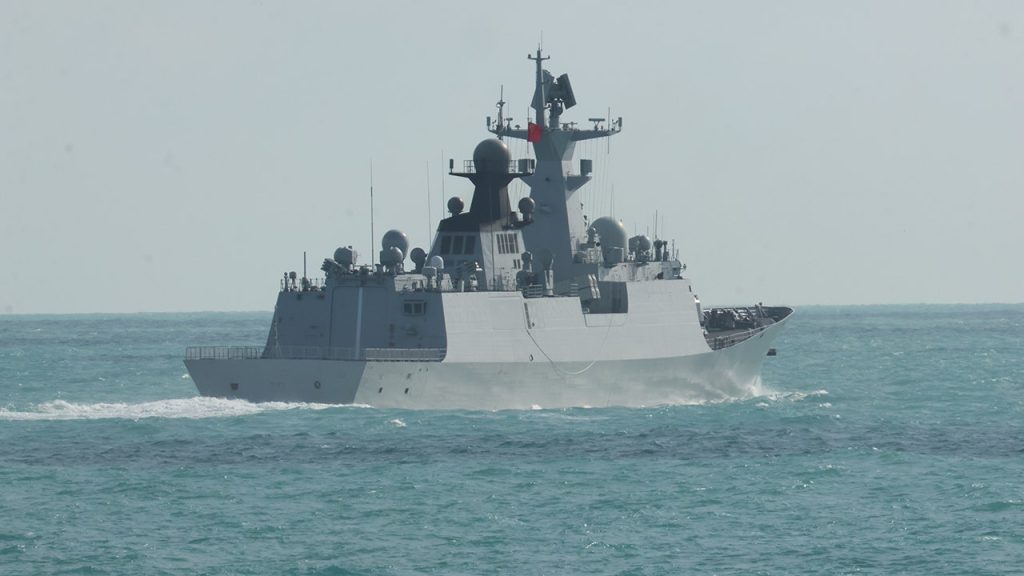Australia is currently on high alert as Chinese military ships navigate waters off its coast, a concerning development highlighted by the Deputy Prime Minister and Minister for Defense, Richard Marles. In a recent interview, he emphasized the situation as unusual yet compliant with international maritime laws. While the ships operate within their rights in international waters, Australia is closely surveilling these vessels to ensure national security.
| Article Subheadings |
|---|
| 1) Monitoring Chinese Military Activity |
| 2) Details of the Chinese Naval Group |
| 3) New Zealand’s Role in the Monitoring Effort |
| 4) Recent Incidents Involving Chinese Aircraft |
| 5) Significance of Surveillance in Regional Security |
Monitoring Chinese Military Activity
Australia has heightened its vigilance concerning the recent movement of a Chinese military task group near its territorial waters. According to statements made by Richard Marles, Australia’s Deputy Prime Minister, the military presence has been abiding by international maritime law, yet it remains a notable event in the region. The Australian government views this situation as “not unprecedented, but an unusual event,” which prompts active surveillance of the Chinese vessels to safeguard Australian national interests. The monitoring involves both strategic assessments of the vessels’ activities and shifts in the geopolitical landscape, particularly reflecting Australia’s stance on maintaining stability in the Indo-Pacific area.
Details of the Chinese Naval Group
The task group currently spotted off the coast of Australia consists of a People’s Liberation Army-Navy (PLA-N) Jiangkai-class frigate named Hengyang, alongside a Renhai-class cruiser, the Zunyi, and a replenishment vessel known as the Weishanhu. According to a statement from the Australian Department of Defense issued on February 13, the vessels navigated through Southeast Asia before reaching Australia’s maritime boundaries. The Department of Defense noted that the Australian military routinely monitors all maritime traffic transiting through its Exclusive Economic Zone as part of a broader commitment to maritime safety and regional security. This surveillance is crucial, with further reports indicating that the Navy has been shadowing these Chinese vessels approximately 150 nautical miles east of Sydney.
New Zealand’s Role in the Monitoring Effort
In addition to Australia, New Zealand has also been actively involved in monitoring the movements of the Chinese fleet. The New Zealand Defense Minister, Judith Collins, made a public statement confirming that the nation is coordinating its surveillance efforts with Australia. Collins indicated that New Zealand has not received any communication from the Chinese government explaining the purpose of this naval deployment or its future plans in the region. The surveillance collaboration highlights the partnership between Australia and New Zealand in maintaining regional peace and security, particularly given the increasing assertiveness of Chinese military operations in the South Pacific.
Recent Incidents Involving Chinese Aircraft
Tensions escalated recently due to an interaction involving a Royal Australian Air Force (RAAF) P-8A Poseidon maritime patrol aircraft and a Chinese PLA-AF J-16 fighter aircraft. On February 11, 2025, the RAAF aircraft encountered an unsafe maneuver by the Chinese fighter, which involved the release of flares in close proximity to the Australian aircraft. Reports from the Australian Department of Defense categorize this incident as “unsafe and unprofessional,” stating it posed a risk to the aircraft and its personnel. Fortunately, no harm came to the RAAF crew during this encounter. However, the incident underscores the repeatedly tense nature of air and maritime interactions between Australian and Chinese military forces, prompting calls for open communication to prevent misunderstanding and potential conflict.
Significance of Surveillance in Regional Security
The ongoing naval activities and increasing frequency of military encounters signify a larger narrative of regional security that Australia and its allies need to navigate carefully. The government’s decisions to monitor these Chinese vessels and respond to airspace violations reflect a broader strategy to assert Australia’s sovereignty over its maritime territory while operating under the framework of international law. Maintaining a robust surveillance posture is critical for both deterrence and reassurance to the Australian public and neighboring countries, as it emphasizes the collective security framework established among allies in the Indo-Pacific region. Engaging in these monitoring efforts aligns with Australia’s strategic defense priorities, which include bolstering partnerships and enhancing collaborative initiatives to counterbalance rising military assertiveness from China.
| No. | Key Points |
|---|---|
| 1 | Australia is actively monitoring Chinese military ships near its coast. |
| 2 | The task group includes various naval vessels, notably the Hengyang and Zunyi. |
| 3 | New Zealand is coordinating monitoring efforts alongside Australia. |
| 4 | A recent incident involved dangerous interactions between Australian and Chinese aircraft. |
| 5 | Surveillance activities are crucial for maintaining regional security and asserting sovereignty. |
Summary
The emergence of Chinese military vessels near Australian waters has raised considerable concern regarding regional security and diplomatic relations. With Australia and New Zealand collaborating to monitor these activities, the situation reflects the complexities of international law and the increasing military assertiveness of China. As Australia bolsters its surveillance operations, the implications for regional partnerships and security alliances are substantial and highlight the need for ongoing dialogue and cooperation among nations in the Indo-Pacific region.
Frequently Asked Questions
Question: Why is Australia monitoring Chinese ships?
Australia is monitoring Chinese ships to ensure national security and to safeguard its maritime territories amidst heightened military activity in the region.
Question: What are the specific Chinese vessels being monitored?
The monitored vessels include the PLA-N Jiangkai-class frigate Hengyang, the Renhai-class cruiser Zunyi, and the replenishment vessel Weishanhu.
Question: What recent incident has escalated tensions between Australia and China?
A recent incident involved a Chinese fighter aircraft releasing flares near an Australian maritime patrol aircraft, which was deemed an unsafe and unprofessional maneuver.


